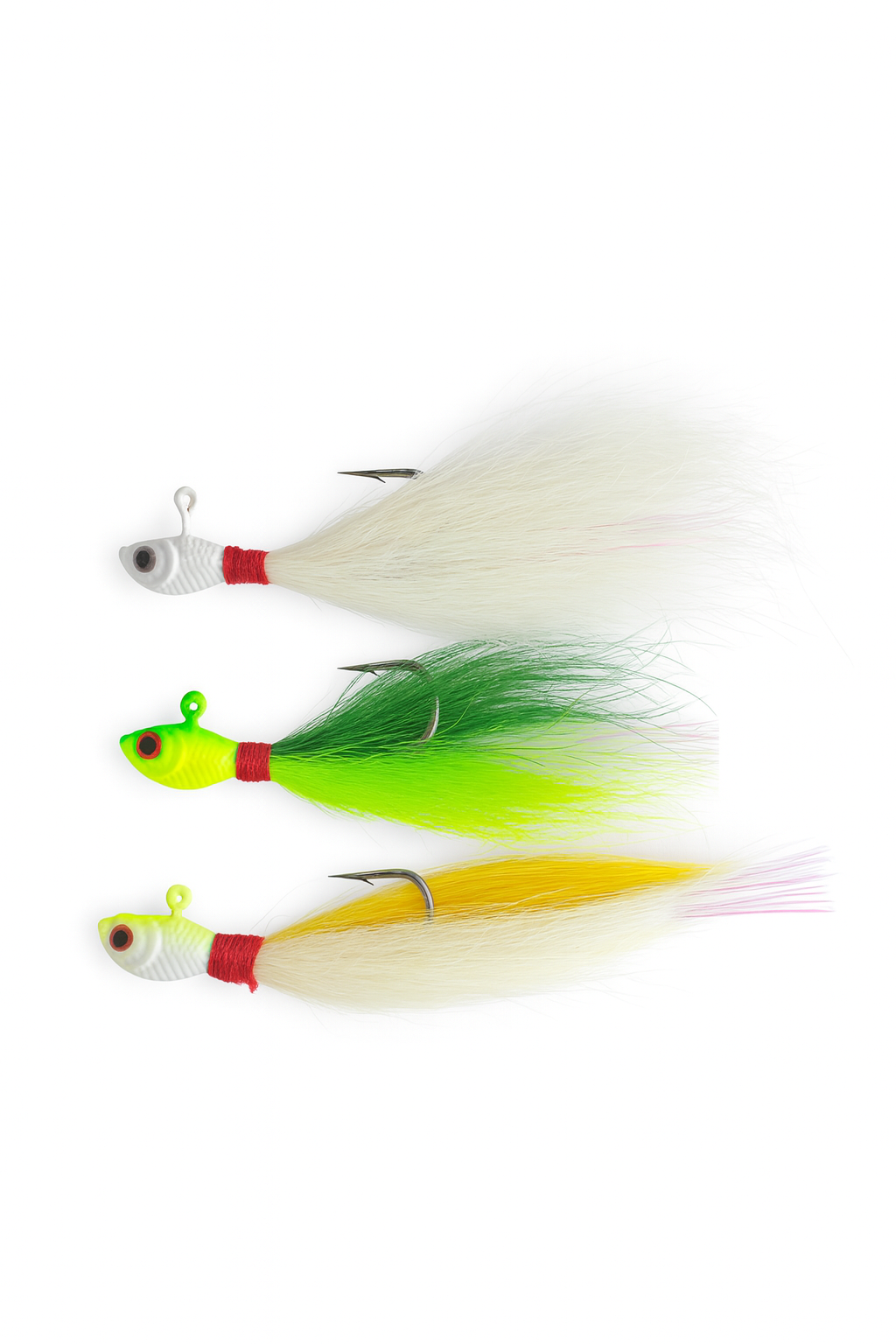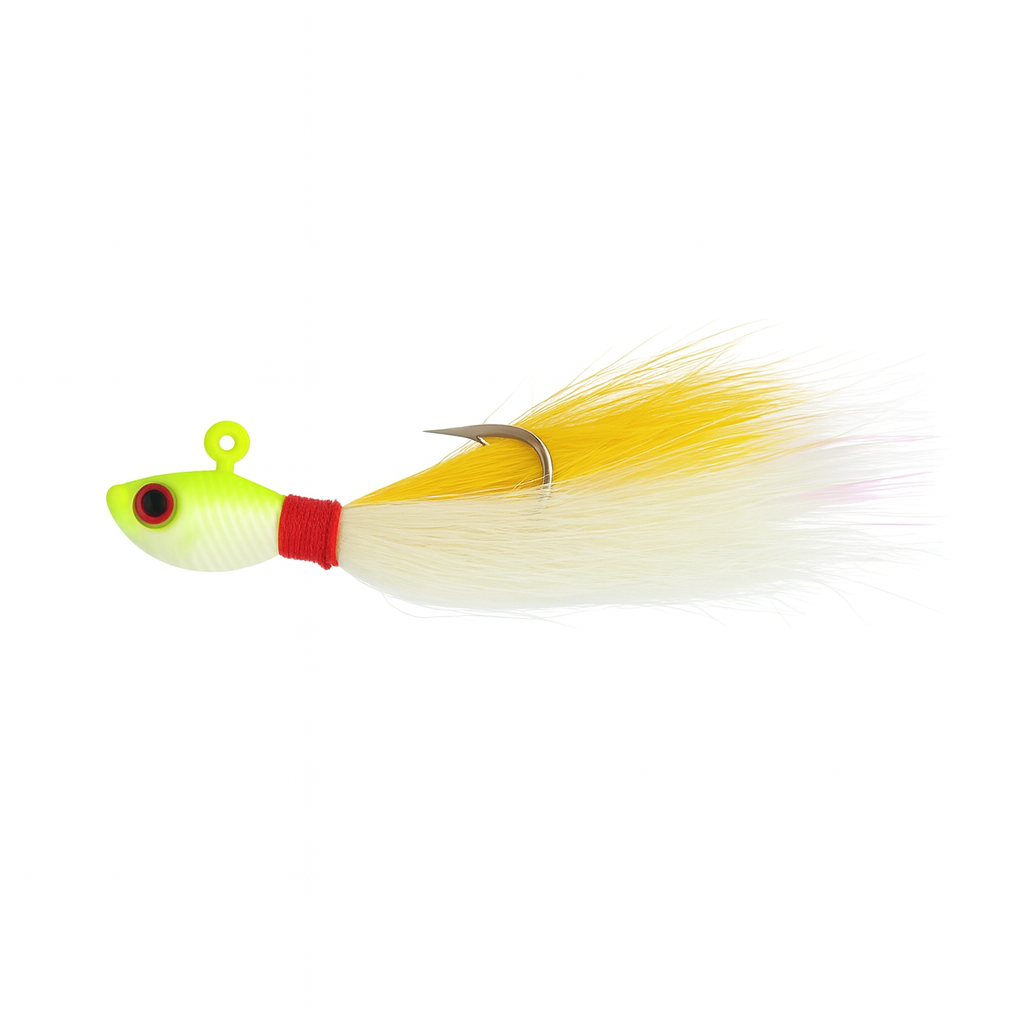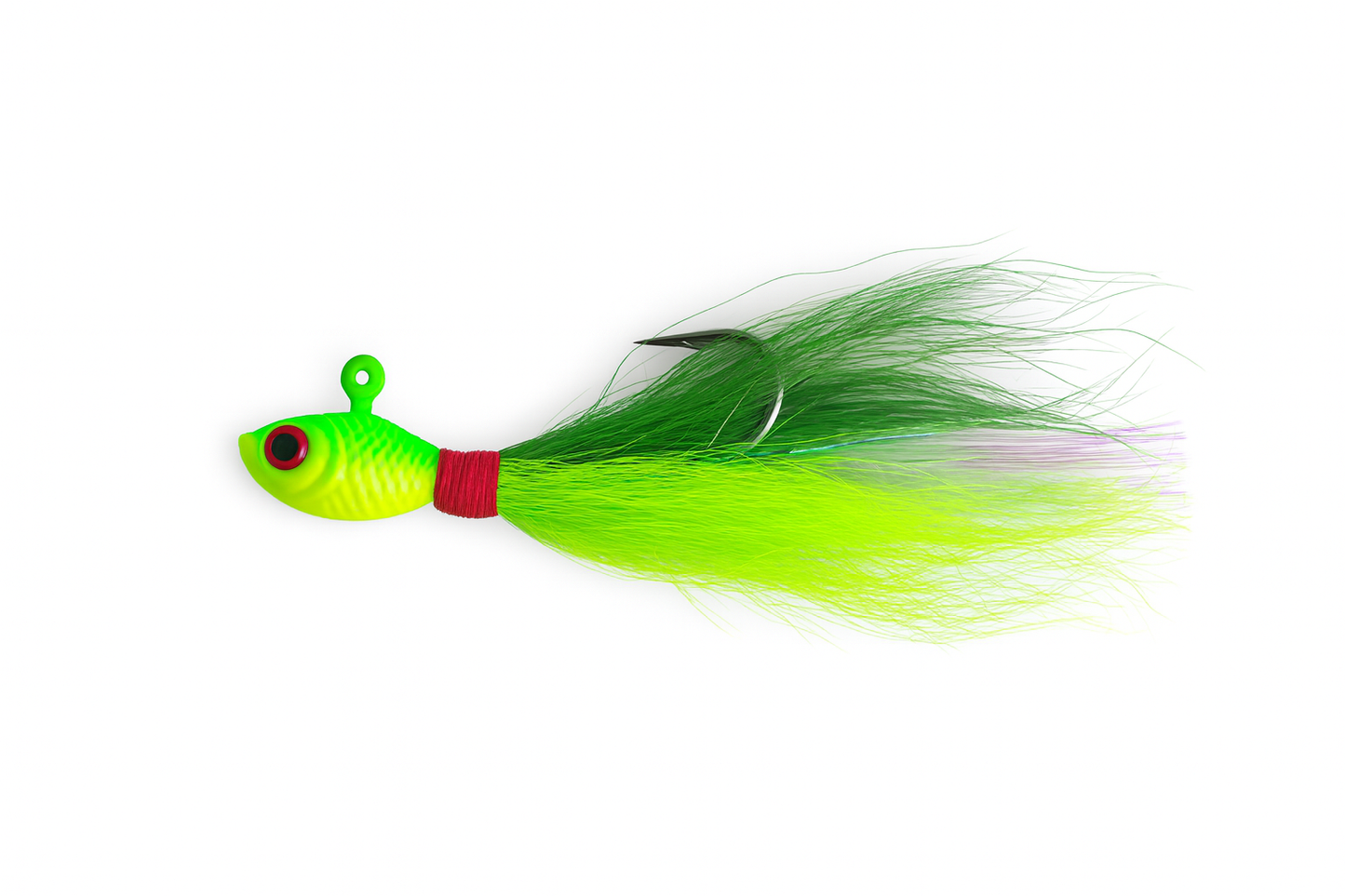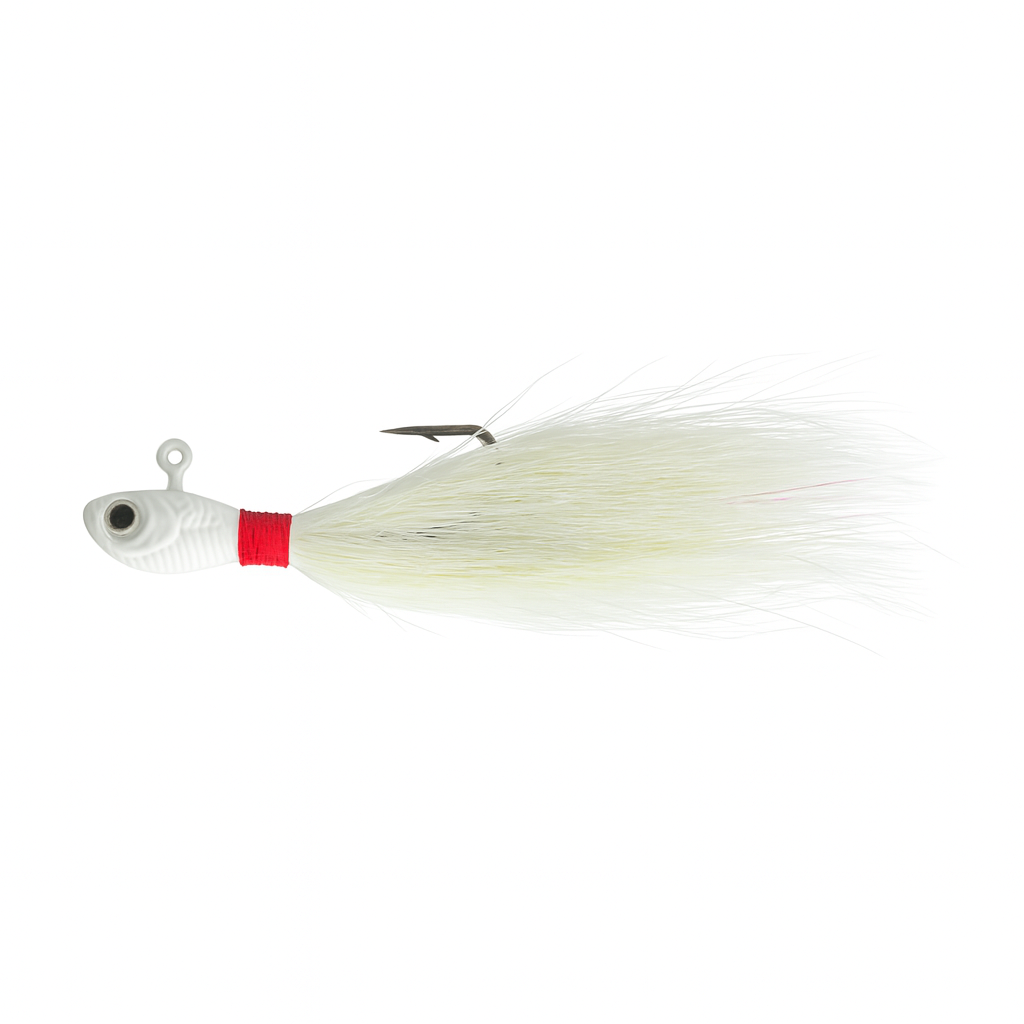Best Jig Weight for Offshore Slow Pitch Fishing: 60g or 80g?
Share
60g vs 80g Slow Pitch Jigs: Which Weight Should You Use Offshore?
When you first get into slow pitch jigging offshore, one of the most common questions is simple: Should I fish a 60g jig or step up to an 80g? Both weights catch fish, but choosing the right jig for the conditions makes a huge difference in how your jig moves and how often you get bit.
In this guide, we’ll break down when to fish 60g vs 80g slow pitch jigs in Southwest Florida, how depth and current affect your choice, and a few simple rules you can use every time you drop on a wreck or reef.
Why Jig Weight Matters for Slow Pitch
Slow pitch jigging is all about staying as vertical as possible and letting the jig flutter on the fall. If your jig is too light, it will drift way behind the boat and lose its action. If it’s too heavy, it sinks like a rock and looks dead in the water.
The right weight for the conditions will:
Keep your line straight up and down. This is key for a clean slow pitch action.
Let the jig fall with a controlled flutter. Not too fast, not too slow—just like an injured baitfish.
Help you feel bites clearly. A properly weighted jig transmits subtle taps and “weight changes” better than one that’s scoping way out.
When to Use a 60g Slow Pitch Jig
Think of the 60g as your “finesse” and light-conditions jig. It shines when you’re fishing shallower water or when the current is manageable.
Best Depth for 60g Jigs
In most Southwest Florida conditions, 60g jigs are ideal for:
- 60–110 feet of water
- Light to moderate current
- Days with lighter wind and less drift
Why 60g Works So Well
Longer flutter time. A lighter jig stays in the strike zone longer as it falls, giving snapper and grouper more time to see it.
More natural action. The 60g Outshore Gear jigs have a lively, sliding fall that looks a lot like a stunned baitfish.
Great for picky fish. When the bite is tough or the water is extra clear, a 60g can look more natural than heavier options.
Situations Where 60g Is a Good Choice
- Fishing public reefs in 70–90 feet with light current
- Early morning when fish are up in the water column
- Targeting mangrove snapper and smaller red grouper
When to Use an 80g Slow Pitch Jig
The 80g jig is your “workhorse” weight for the Gulf. It handles more current and more depth while still giving you a good slow pitch action.
Best Depth for 80g Jigs
In typical SWFL conditions, 80g jigs are ideal for:
- 90–160 feet of water
- Moderate to stronger current
- Windy days when the boat drifts faster
Why 80g Is So Versatile
Stays vertical longer. The extra weight helps your line stay closer to straight up and down, even when the tide picks up.
Reaches the bottom faster. That’s important when you’re sharing a spot or when fish are tight to structure and you don’t want to drift past them.
Handles bigger fish. The 80g size pairs well with slightly heavier tackle and gives you confidence on bigger grouper and amberjack.
Situations Where 80g Is a Better Choice
- Fishing deeper ledges in 120–150 feet
- Days with stronger tides or wind-driven drift
- Targeting larger grouper, amberjack, or kingfish around structure
Key Factors That Help You Choose 60g or 80g
To keep it simple, think through these three factors every time you drop a jig:
1. Depth
Deeper water usually means more weight. As a starting point in SWFL:
- 60–110 ft: start with 60g
- 90–160 ft: start with 80g
2. Current and Drift
If you drop a 60g and your line quickly scopes out at an angle, bump up to an 80g. You want your line as close to vertical as possible so the jig can flutter properly.
3. Target Species
For mangrove snapper, lane snapper, and smaller reef fish, 60g is often perfect. When you’re focused on bigger grouper, amberjack, or when you know you’re fishing heavier structure, 80g gives you a little more control.
Can You Switch Weights During the Same Trip?
Absolutely. In fact, you should. Conditions change constantly offshore—tide, wind, and boat position all affect how your jig behaves.
A simple approach is to keep both a 60g and an 80g Outshore Gear jig rigged and ready. Start with the lighter jig and see how it behaves. If you’re struggling to stay vertical or feel the bottom, switch to the 80g. If the fish are suspended and the 80g feels too “fast,” drop back to the 60g.
Color Choices for 60g and 80g Jigs
Once you’ve got the weight dialed in, color is your next decision:
- Electric Mahi: Great all-around choice with bright flash for sunny days.
- Reef Lime: Stands out in green Gulf water or low visibility.
- Violet Shiner: Excellent deeper or on cloudy days when you want contrast.
It’s often better to change weight first to match conditions, then rotate colors to see what fish respond to best.
Recommended Setups for Each Weight
Here’s a quick guideline for matching your gear to each jig:
60g Jig Setup
- Rod: Medium slow pitch rod rated up to ~120g
- Main line: 20–30 lb braid
- Leader: 20–30 lb fluorocarbon
- Use when: fishing 60–110 ft with controlled drift
80g Jig Setup
- Rod: Medium or medium-heavy slow pitch rod rated up to ~160g
- Main line: 30 lb braid
- Leader: 30–40 lb fluorocarbon
- Use when: fishing 90–160 ft or dealing with stronger current
Simple Rule of Thumb for 60g vs 80g
If you want a quick rule to remember on the water, use this:
Start light, then step up. Begin with the 60g. If you can’t stay vertical or feel bottom confidently, move to the 80g. Let the conditions tell you what to use rather than forcing one jig to work in every situation.
Dial In Your Offshore Game with Outshore Gear Jigs
Both 60g and 80g Outshore Gear slow pitch jigs are built for Gulf bottom fishing—balanced bodies, strong hardware, and proven colors for Southwest Florida reefs and wrecks. Once you understand when to reach for each weight, you’ll spend more time in the strike zone and less time fighting your presentation.
Shop Outshore Gear 60g and 80g Slow Pitch Jigs and get your jig box dialed for your next offshore trip.






